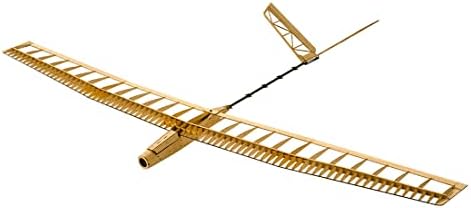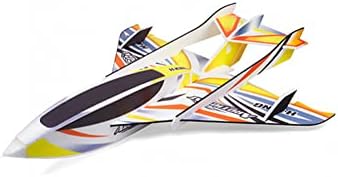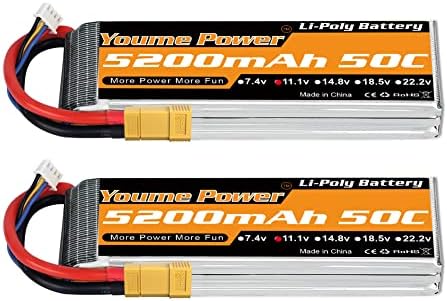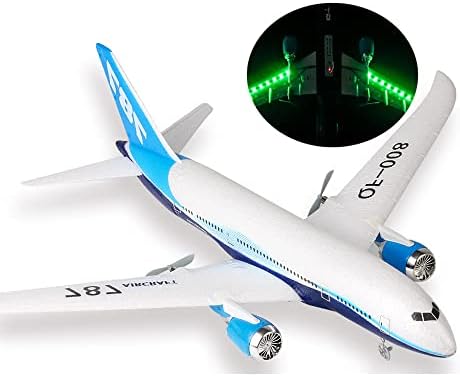



Table of Contents
RC Plane Control Horn: A Comprehensive Guide
Remotely controlled (RC) planes are a great way to get into the hobby of model aviation. They come in all shapes and sizes, from small indoor planes to large-scale scale replicas of real-world aircraft. One of the most important components of any RC plane is the control horn. This small part is responsible for controlling the plane’s ailerons, rudder, and elevator. In this article, we’ll explore what a control horn is, how it works, and how to choose the right one for your RC plane.
What is a Control Horn?
A control horn is a small plastic or metal part that is attached to the control surfaces of an RC plane. The control surfaces are the parts of the plane that move to control the plane’s direction and attitude. The control horn is connected to the servos, which are the motors that move the control surfaces. The control horn is the interface between the servo and the control surface, and it is responsible for translating the servo’s movement into movement of the control surface.
How Does a Control Horn Work?
A control horn works by transferring the movement of the servo to the control surface. The servo is connected to the control horn via a linkage, which is usually made of metal or plastic. The linkage is connected to the control horn on one end and the servo on the other. When the servo moves, the linkage moves, which in turn moves the control horn. The control horn is attached to the control surface, so when the control horn moves, the control surface moves as well.
Types of Control Horns
There are two main types of control horns: push-pull and double-arm. Push-pull control horns are the most common type, and they are used on most RC planes. These horns have two arms that are connected to the servo and the control surface. When the servo moves, the arms move, which in turn moves the control surface.
Double-arm control horns are less common, but they are often used on larger RC planes. These horns have two arms that are connected to the servo and the control surface. However, the arms are connected to the servo and the control surface in different ways. The arms are connected to the servo via a linkage, and they are connected to the control surface via a pivot point. When the servo moves, the arms move, which in turn moves the control surface.
Choosing the Right Control Horn
When choosing a control horn for your RC plane, there are several factors to consider. First, you should make sure that the control horn is the right size for your plane. If the control horn is too large, it will not be able to move the control surface effectively. If the control horn is too small, it may not have enough strength to move the control surface.
Second, you should make sure that the control horn is compatible with your servo. Different servos require different types of control horns, so it’s important to make sure that the control horn you choose is compatible with your servo.
Finally, you should make sure that the control horn is made from a durable material. Control horns are subject to a lot of wear and tear, so it’s important to make sure that the control horn is made from a material that can withstand the rigors of flight.
Conclusion
A control horn is an essential part of any RC plane. It is responsible for transferring the movement of the servo to the control surface, which in turn controls the plane’s direction and attitude. There are two main types of control horns: push-pull and double-arm. When choosing a control horn, it’s important to make sure that it is the right size for your plane, compatible with your servo, and made from a durable material.
FAQs
Q. What is a control horn?
A control horn is a small plastic or metal part that is attached to the control surfaces of an RC plane. The control horn is connected to the servos, which are the motors that move the control surfaces. The control horn is the interface between the servo and the control surface, and it is responsible for translating the servo’s movement into movement of the control surface.
Q. How does a control horn work?
A control horn works by transferring the movement of the servo to the control surface. The servo is connected to the control horn via a linkage, which is usually made of metal or plastic. The linkage is connected to the control horn on one end and the servo on the other. When the servo moves, the linkage moves, which in turn moves the control horn. The control horn is attached to the control surface, so when the control horn moves, the control surface moves as well.
Q. What are the different types of control horns?
There are two main types of control horns: push-pull and double-arm. Push-pull control horns are the most common type, and they are used on most RC planes. Double-arm control horns are less common, but they are often used on larger RC planes.
Q. How do I choose the right control horn for my RC plane?
When choosing a control horn for your RC plane, there are several factors to consider. First, you should make sure that the control horn is the right size for your plane. Second, you should make sure that the control horn is compatible with your servo. Finally, you should make sure that the control horn is made from a durable material.
Q. How do I install a control horn?
Installing a control horn is relatively simple. First, attach the control horn to the control surface with screws or glue. Then, attach the linkage to the control horn and the servo. Finally, adjust the linkage to make sure that the control horn is properly aligned with the control surface.
Price: $8.98
(as of Feb 18, 2023 22:23:47 UTC – Details)







